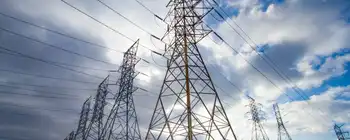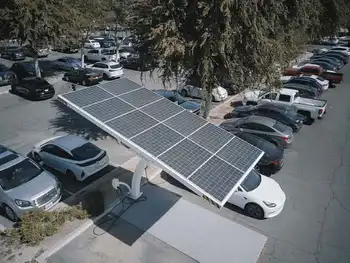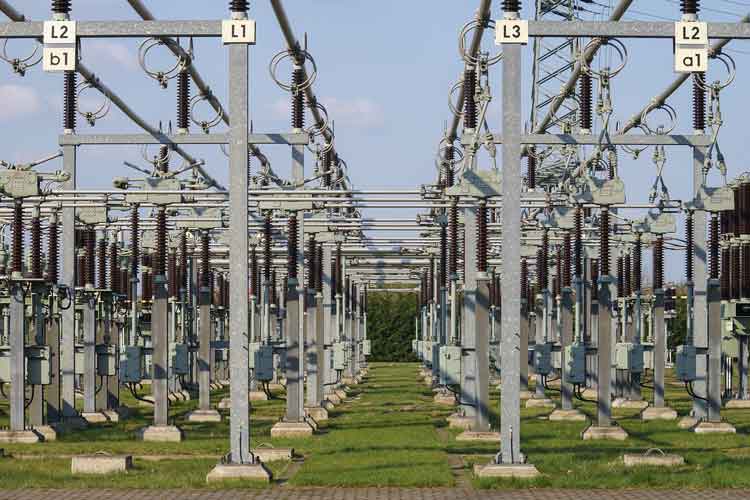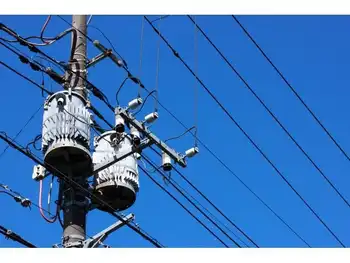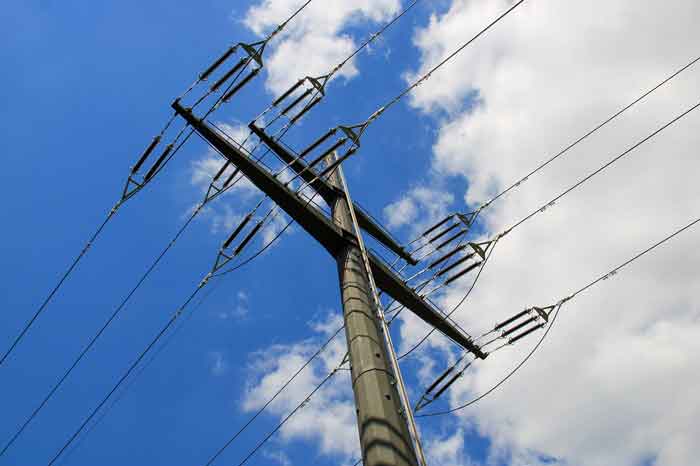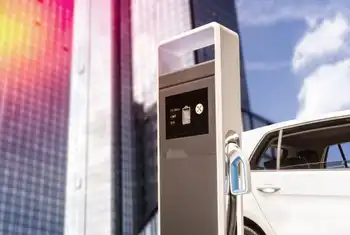Nuclear energy nearing revival
By Chicago Tribune
High Voltage Maintenance Training Online
Our customized live online or in‑person group training can be delivered to your staff at your location.

- Live Online
- 12 hours Instructor-led
- Group Training Available
"Nuclear power is going to be an essential source, in my judgment, of future electricity for the United States," President Bush said at a recent press conference. "Nuclear power is renewable, and nuclear power does not emit one greenhouse gas."
The Bush administration has consistently supported construction of new nuclear plants, offering billions of dollars in subsidies, but the industry says real momentum is only growing now. The attraction of nuclear energy is that it can generate massive amounts of electricity very cheaply, assuming the nuclear plants are run efficiently.
"At least 30 reactors are being considered," said Scott Burnell, spokesman for the Nuclear Regulatory Commission. As recently as two years ago, a handful of new nuclear plants were under consideration.
The nation currently has 103 operating power reactors.
Anti-nuclear activists warn that the nation is about to repeat the mistakes of 30 years ago, when nuclear plants suffering from bungled design and delayed construction led to huge cost overruns, much of it paid for by consumers.
But Nuclear Regulatory Commission Chairman Dale Klein has a positive term for the new interest. He calls it "the nuclear renaissance." He said recently that the NRC expects to receive the first application for a new reactor next year, with as many as 30 to follow.
Most of the interest is in the South or Southeast, where the demand for electricity is growing quickly, Burnell said.
No new U.S. nuclear plant has been ordered since the 1970s.
The partial meltdown at Three Mile Island, the disaster at Chernobyl and vastly inflated building costs pushed the nuclear industry into limbo for decades. Meanwhile, electricity demand rose more slowly than forecast, reducing the need for new generating capacity.
The consumer advocacy group Public Citizen says the energy bill of 2005 offers more than $13 billion in subsidies to induce companies to build a handful of nuclear plants.
Michele Boyd, legislative director for Public Citizen's energy program, said no utility would build new reactors without subsidies.
"They are uneconomical," Boyd said. "Even the subsidies are insufficient."
"The companies are desperate to find more subsidies, and there is going to be an effort to get more money out of Congress," she said.
The energy bill, a priority for Bush and the Republican Party for years, offers loan guarantees, tax credits, insurance and other benefits to the nuclear industry. Much of the assistance is aimed at helping utilities build six new reactors.
For example, a consortium of 10 utilities including Chicago-based Exelon Corp. will get up to $260 million to compensate them for design and application costs for new reactors in Mississippi and Alabama. The consortium, called NuStart, is under no obligation to build the plants after it gets the money.
Nuclear energy is not a major issue now for Democrats, who will control the House of Representatives beginning in February.
"The focus on energy is on other things like alternative fuels," said Drew Hammill, a spokesman for incoming Speaker of the House Nancy Pelosi.
In an interview last fall, Pelosi said that nuclear energy was worthy of examination, but otherwise she has said little about the issue.
The nuclear industry actually got its first boost in 2002, when the federal government urged utilities to look for new nuclear opportunities.
The theory behind the subsidies is that if the country can successfully build a half-dozen reactors, it will demonstrate to utilities and Wall Street investors that nuclear power is viable.
Many nuclear backers agree that government help is needed to resume construction of plants, but those plants are inevitable.
"If you look at nuclear without any incentives or tax credits, it's very competitive," said Andy White, president and CEO of nuclear energy at General Electric, a global power in nuclear energy. GE is offering new designs for nuclear plants.
"We probably would have gone ahead" in backing new nuclear plants, White said. "We would have done it at a slower pace."
One financial analyst agreed, saying nuclear power is economically viable but needs government help for now.
"Having federal backing is important," said Paul Justice, an analyst with Morningstar. "There is a growing case for nuclear power."
While remarkably expensive to build, a properly operated nuclear plant produces electricity more cheaply than practically any other source. The price of coal and natural gas have risen sharply in recent years, making nuclear more attractive because its uranium fuel is relatively cheap.
"There are people out there who are ready for the undertaking," Justice said of the new plants. "I think it's part of a long-term solution and eventually they will be built."
An argument often made in favor of nuclear energy is that it produces less greenhouse gas than other types of power generators, though the issue of what to do with the remarkably radioactive nuclear waste generated by reactors remains a tremendous problem for the industry.
Exelon Chief Executive John Rowe has repeatedly said that Exelon will not build a new nuclear plant until there is a permanent solution to the disposition of spent fuel.
The industry had counted on interring its waste at the Yucca Mountain site in Nevada. But that project is many years overdue, and it is unclear whether it will ever open.
Nevada politicians are nearly unanimous in opposing plans to turn part of their state into a nuclear waste dump.
Nevada's opposition got a boost in the last election. Sen. Harry Reid, a Nevada Democrat and fierce opponent of Yucca Mountain, is the incoming Senate majority leader.
If ever there was a poster child for the past failures of nuclear power, it is the Tennessee Valley Authority.
Created in 1933 by President Franklin D. Roosevelt, the TVA provided electricity, flood control and economic development to one of the poorest regions of the country.
The federal corporation's power-service area covers 80,000 square miles in the Southeastern United States, including almost all of Tennessee and parts of Mississippi, Kentucky, Alabama, Georgia, North Carolina and Virginia.
In the 1960s the TVA embarked on an ambitious nuclear campaign to build 17 reactors.
The going was never smooth.
For example, the Browns Ferry Unit 1 reactor in Alabama started generating electricity in 1974. A year later, a workman using a candle to search for air leaks near the plant's control room accidentally ignited some insulation.
The resulting fire destroyed electric cables essential for safely operating the reactor and filled the control room with smoke. The reactor was out of control for a time, until workers were able to manually shut it down.
It was one of the worst incidents ever to occur at a U.S. utility-operated nuclear plant. Unit 1 was off line for a year.
In the 1980s, the TVA suffered so many management and construction problems that it shut down its entire fleet of reactors. Instead of 17 reactors, the TVA built just six, with only five operating today. Browns Ferry Unit 1 has generated no electricity for more than 20 years.
For example, the TVA canceled its Bellefonte nuclear plant in Alabama midway through construction, eventually taking a financial charge of nearly $4 billion for a project that has never generated a single watt of electricity.
David Lochbaum, director of nuclear safety for the Union of Concerned Scientists, is critical of the TVA's first foray into nuclear power.
"They were horrible," he said. "That history has not been very good."
And now the TVA is thinking about building new nuclear power plants.
Lochbaum and critics say the TVA, like the nuclear industry overall, is now doing a much better job running its reactors.
Stephen Smith, executive director of the Southern Alliance for Clean Energy, seriously questions the economics of new nuclear plants. But he acknowledges the TVA is doing a better job of operating its nuclear plants than in the past.
"Generally the whole industry has trended up," he said. "TVA has been consistent in that trend."
Over the years the TVA methodically restored its reactors to service. The last to come online is Browns Ferry Unit 1. It is due to begin generating electricity again in a few months, the result of several years of rehabilitation accomplished on time and on budget.
Now the TVA is considering finishing a partly built reactor adjacent to an operating reactor at its Watts Bar nuclear plant in Tennessee.
And the TVA is working with the NuStart consortium to study the feasibility of building two modern reactors at its Bellefonte site.
"We are already spending money to bring new nuclear capacity on line and other people are just talking about it," said Jack Bailey, vice president of nuclear generation development for the TVA.
Bailey said the Bellefonte reactors probably would cost between $4 billion and $6 billion to complete and could be producing power sometime between 2015 and 2017. The final cost has not been determined, however.
Bailey said the industry is well aware that cost overruns will stifle any investment in future nuclear plants.
"It is one of the issues that people looking at new plants are very concerned about," he said.
The nuclear industry is counting on standardization among nuclear plants to cut costs.
Existing nuclear plants were customized by utilities, making the design and operation of one plant significantly different than another.
Future plants are planned to be much more similar to one another.
"The designs will be 75 to 80 percent identical," said Marilyn Kray, president of NuStart and vice president of project development for Exelon. Besides working with the TVA, NuStart is looking at a Mississippi plant in conjunction with the utility Entergy.
Kray said the lessons learned in building one plant can be applied in construction of the next. In the same way, improvements in operations at one plant can be more easily transferred to another.
"Now you can plagiarize," Kray said. "Plagiarism is a good thing in the nuclear industry. It standardizes things."
The designers of nuclear plants are also working to simplify construction and operations to restrain costs.
Andy White, the GE nuclear executive, said his company's new reactor relies on passive safety systems rather than complex mechanical systems.
For example, water needed to cool the reactor core flows via gravity, rather than being pumped as in older models. It's more reliable and intended to be cheaper to build. Pools to store highly radioactive spent nuclear fuel will be located underground for improved security. Older-design reactors store spent fuel in pools located on their roofs, which critics say makes them vulnerable to terrorist attack.
White said new reactors could safely handle a serious emergency for three days without human intervention.
Erich Pica, spokesman for the Friends of the Earth, doesn't buy the nuclear industry's arguments.
"We haven't built a nuclear plant in this country in 30 years," Pica said. "It's highly optimistic to think they can standardize" to save money.
"Cost overruns, mismanagement... all play into the right interpretation that this is the wrong way to go," he said.





